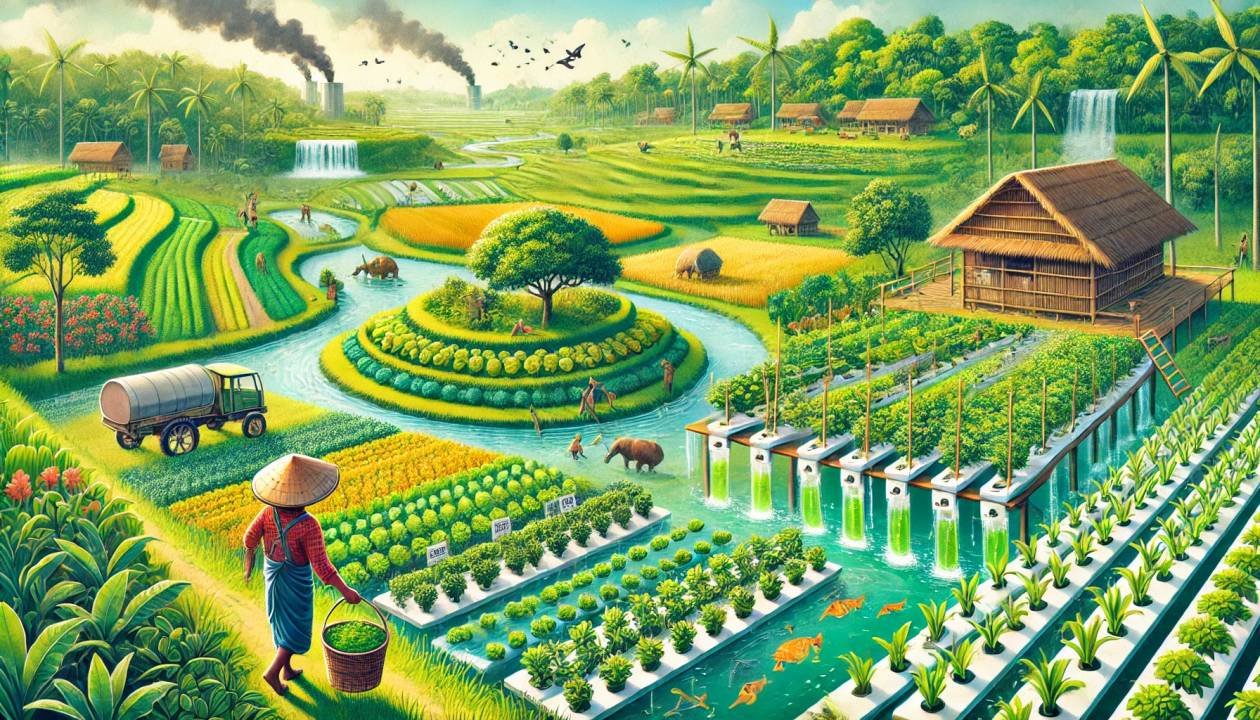
Intro post:
With its vast and fertile deltaic plains, Bangladesh is one of the world’s most significant agricultural lands. Agriculture remains the backbone of the Bangladeshi economy, employing nearly half its workforce and contributing around 14% to its GDP. Despite its agricultural potential, Bangladesh faces numerous challenges that hinder productivity and sustainability, creating a unique opportunity for innovative startups to drive transformative change.
Identifying the Right Problems
Bangladesh’s agriculture sector’s problems include outdated farming practices, inefficient water usage, low crop diversity, and inadequate access to modern technologies and financial resources. Addressing these issues can significantly enhance productivity, ensure food security, and boost the economy.
Potential Solutions and Startup Opportunities
- Modernizing Farming Practices: Introducing precision agriculture technologies, such as IoT devices and AI-driven analytics, can optimize resource use and increase yields. Startups can develop affordable solutions tailored to local conditions, helping farmers make data-driven decisions. Impact: This could increase crop yields by up to 30%, significantly enhancing productivity.
- Water Management: Efficient irrigation systems and conservation techniques are crucial for sustainable agriculture. Startups can innovate low-cost, efficient irrigation solutions that reduce water wastage and improve crop productivity. Impact: Proper water management could reduce water usage by 25% while maintaining or increasing crop yields.
- Crop Diversification: Encouraging crop diversity can mitigate risks associated with mono-cropping and enhance soil health. Startups can provide platforms that connect farmers with markets for diverse crops, ensuring better prices and reducing dependency on single crops. Impact: Diversification can increase farmer resilience to market and climate fluctuations, potentially increasing farm incomes by 20%.
- Access to Finance: Many small-scale farmers need financial services, limiting their ability to invest in modern farming inputs. Fintech startups can develop microfinance solutions that offer tailored loans and insurance products, enabling farmers to invest in high-quality seeds, fertilizers, and equipment. Impact: Improved financial access can lead to a 10-15% increase in investment in farm inputs, boosting overall agricultural output.
- Aeroponics and Aquaponics: These innovative farming methods can significantly boost agricultural productivity. Aeroponics involves growing plants in an air or mist environment without soil, while aquaponics combines fish farming with hydroponics. These methods can produce higher yields with less water and space, making them ideal for densely populated areas. Impact: Aeroponics and aquaponics can increase yields by up to 50% compared to traditional methods.
- Hydroponics: Adding to the innovative methods, hydroponics allows plants to grow in a water-based, nutrient-rich solution, eliminating the need for soil. This method is particularly effective for urban areas where land is scarce. Impact: Hydroponics can significantly reduce water usage by up to 90% and increase crop yields by 25-30%.
Market Potential
The market potential for agricultural innovations in Bangladesh is immense. The country’s agriculture market is expected to grow significantly, driven by increasing demand for food and rising incomes. By 2025, the agricultural technology market alone is projected to reach $1.5 billion, with substantial investments in precision farming, water management, and crop diversification. Currently, agriculture contributes about $28 billion to the economy. With the right innovations, this contribution could increase by 20-30% over the next decade.
Economic Impact
By addressing these challenges through innovative startup solutions, Bangladesh can significantly boost its agricultural productivity, enhance food security, and increase farmer incomes. Introducing modern farming practices, efficient water management, crop diversification, and advanced methods like aeroponics, aquaponics, and hydroponics can transform the agricultural landscape. This transformation could add an estimated $5-8 billion to the economy, potentially increasing agriculture’s contribution to GDP by 20-30%. This increase in GDP could lead to a significant reduction in poverty and an overall improvement in the population’s standard of living.






